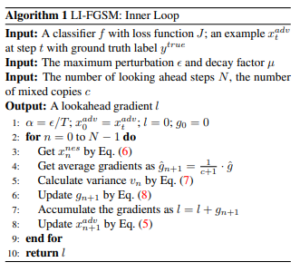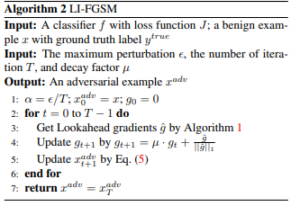Abstract
Deep neural networks (DNNs) are vulnerable to adversarial examples generated by adding malicious noise imperceptible to a human. The adversarial examples successfully fool the models under the white-box setting, but the performance of attacks under the black-box setting degrades significantly, which is known as the low transferability problem. Various methods have been proposed to improve transferability, yet they are not effective against adversarial training and defense models. In this paper, we introduce two new methods termed Lookahead Iterative Fast Gradient Sign Method (LI-FGSM) and Self-CutMix (SCM) to address the above issues. LI-FGSM updates adversarial perturbations with the accumulated gradient obtained by looking ahead. A previous gradient-based attack is used for looking ahead during N steps to explore the optimal direction at each iteration. It allows the optimization process to escape the sub-optimal region and stabilize the update directions. SCM leverages the modified CutMix, which copies a patch from the original image and pastes it back at random positions of the same image, to preserve the internal information. SCM makes it possible to generate more transferable adversarial examples while alleviating the overfitting to the surrogate model employed. Our two methods are easily incorporated with the previous iterative gradient-based attacks. Extensive experiments on ImageNet show that our approach acquires state-of-the-art attack success rates not only against normally trained models but also against adversarial training and defense models

